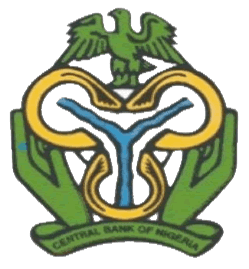Credit Risk Management System
Supervision Publications
|
Supervision Circulars &
Guidelines
Background
The late 1980s and early 1990s witnessed rising non-performing credit
portfolios in banks and these significantly contributed to the financial distress
in the banking sector. Also identified was the existence of predatory debtors
in the banking system whose modus operandi involved the abandonment of their debt
obligations in some banks only to contract new debts in other banks. Furthermore,
the use of status enquiries on bilateral basis between banks was characterised
by some weaknesses. Status enquiries were regarded as business courtesies to which
some banks either did not respond to or gave vague replies. In spite of the systemic
weakness, many banks continued to extend fresh facilities to customers who already
had hardcore and un-serviced debts with other banks and financial institutions.
On the part of the regulators, the paucity of credit information had inhibited
consistent classification of credits granted to certain borrowers and their associated
companies.
Consequently, the need for a central database from which consolidated credit information on borrowers could be obtained became imperative. It was against this background that the CBN Credit Risk Management System [CRMS] or Credit Bureau was established. The decision to establish a Credit Bureau in Nigeria featured in the Presidential Budget Speech of 1990. Thereafter, it was given a legal backing by the CBN Act No.24 of 1991 [sections 28 and 52] as amended. The enabling legislation empowered the CBN to obtain from all banks, returns on all credits with a minimum outstanding balance of N100,000.00 (now N1.m and above of principal and interest), for compilation and dissemination by way of status report to any interested party (i.e. operators or regulators). The Act made it mandatory for all financial institutions to render returns to the CRMS in respect of all their customers with aggregate outstanding debit balance of N=1,000,000.00 (One million naira) and above. It also required banks to update these credits on monthly basis as well as make status enquiry on any intending borrower to determine their eligibility or otherwise. Banks are penalized for non-compliance with the provisions of the Act.
Presently the CRMS is web-enabled thus allowing banks and other stakeholders to dial directly into the CRMS database for the purpose of rendering the statutory returns or conducting status enquiry on borrowers. Also, the CBN is in the process of integrating the CRMS with other systems operating in the bank to make it more efficient. More
Objectives of CRMS
- Strengthening the Credit Appraisal Procedures of Banks: This is achieved by generating accurate and reliable credit information on bank borrowers from a central database. With such information available, banks will be in a better position to appraise the repayment capabilities of customers seeking new or additional credit facilities from them. This will reduce or eliminate the granting of loans to customers who had no capacity to repay and/or already had non-performing and sometimes abandoned loans in other banks.
- Storage and dissemination of Credit Data: The Credit Bureau captures all credits of N1 million (principal and interest) and above from banks’ monthly returns on all their customers. Banks are also required to provide all other relevant data on the facilities such as names of borrowers, directors of borrower companies, credit limit, outstanding amount, status of credit, securities pledged, etc. These data are collated in the CRMS database, which are made available to banks through credit status enquiry/report. The CBN Credit Bureau provides objective responses to status enquiries to promote a responsive borrowing culture. The customers who meet their obligations as contracted will consequently continue to have access to credit facilities, while delinquent customers are denied access to new facilities from other banks until they make good their outstanding delinquent credits.
- Monitoring of Over-Exposure to Borrowers: The consolidated credit information generated by the Credit Bureau will enable banks to identify borrowers who have contracted debts in excess of their repayment capabilities. Banks are thus put on notice to avoid putting their funds into areas or sectors that are already experiencing a lull or declining prospects. It will also assist banks in the evaluation of the viability or otherwise of prposals on loans from customers.
- Facilitating Consistent Classification of Credits: The Credit Bureau will facilitate regulators’ consistent classification of credits granted to the same borrower(s) by different banks.
- The Regulator will also have first hand information on a customer’s global debt profile thereby eliminating the erroneous classification of a customer’s loan as performing in one bank and doubtful or lost in another bank

 Flickr
Flickr Instagram
Instagram LinkedIn
LinkedIn